Join our team of experienced trekkers on the Annapurna base camp trek 2024/2025 departures and enjoy a hassle-free trek to Mount Annapurna base camp. Get the best Annapurna base camp trek cost with all the necessary services for the journey with us, Nature Excursion (no hidden charges).
Annapurna base camp trek is an adventurous 13 days journey in Nepal that takes travelers to the lap of the tenth-highest mountain in the world, Mt. Annapurna (8,091 m). Located in the western Himalayan range, Mt. Annapurna has the highest fatality rate among the eight-thousanders.
On the contrary, the Annapurna base camp trekking route is one of the most doable among all the treks in Nepal. Annapurna base camp is the closest you can get to this giant 8,091 meters mountain safely and somewhat comfortably.
*Fun fact: Annapurna range is roughly around 60 to 70 kilometers lateral and includes one mountain over 8,000 meters, 13 mountains over 7,000 meters, and 16 mountains over 6,000 meters. This enormous range extends from Vara-Shikar (Annapurna Fang) to Manaslu and Lamjung ranges.
The Annapurna base camp trekking is very famous around the world for its stunning landscapes, welcoming locals, engaging culture, diverse flora & fauna, picturesque villages, and overall the entire trekking experience it offers.
The way you see nature on this trip far outweighs the efforts it demands. Starting your trek from 1,070 meters (3,510 ft) (Nayapul) up to 4,130 meters (13,550 ft) (Annapurna Base Camp), the journey is full of adventure, learning, and serenity.
On the Annapurna base camp trek, nature will amaze you at every point. From lush subtropical forests, waterfalls, and streams, the landscape changes to barren hills, glaciers, and looming mountains as you get close to the Annapurna base camp.
The Annapurna base camp trail winds inside the Annapurna Conservation Area. You will be trekking through forests of pine, rhododendron, oak, maple, etc. Birds and wildlife like langur monkeys, Himalayan tahr, blue sheep, etc are some common animals you may come across while trekking.
The Gurung and Magar tribes are commonly seen in the villages along the trail, along with some other communities. Adventure underlies the faith of the locals in these mountains and valleys, as they are sacred to them. They believe in their power and appreciate their existence. And you must respect their beliefs, too, as you make your way through these villages to the base camp.
Annapurna base camp trek is not just any other adventurous trip. If you unfold the blindness of adventure and try looking deep, there is a lot to see, feel, and learn. There is a reason why any trip to the Himalayas is said to be life-changing. With our native guides and porters, you will get to experience this aspect of the journey as well.
A typical day on the Annapurna base camp trek
Your typical day on the Annapurna base camp trek looks like this: you will begin trekking early in the morning, around 7:30 AM to 8:00 AM, to reach the next village before the evening. We have our breakfast by 7:00 AM and pack our stuff.
Porters usually walk ahead of us and are more likely to reach the next village earlier than us. So, make sure to pack all of the essentials in the day pack that you may need while trekking.
We take an hour-long break for lunch on the way, with several quick breaks to catch our breath, enjoy the view, or drink water.
Do you need a guide for the Annapurna base camp trek? Can I trek alone?
Solo trekking to the Annapurna base camp is not allowed, which means you can not obtain the Annapurna base camp trek permit without the help of a trekking company or a guide. So, is the Annapurna base camp trek worth doing?
Yes, the Annapurna base camp trek is worth doing and trekking with a guide not only makes the journey safe for you but also enhances the trekking experience. The guide will help you understand the mountain community, its unique lifestyle, cultural heritage, beliefs of locals, flora & fauna, etc. You will get to hear all the legends and get to know the locals and their norms closely.
If you wish to trek alone, then join a private trek with us. You will be supported by a guide and porter for a hassle-free trek. This is the closest you can get for trekking alone to Annapurna base camp at the moment.
Annapurna base camp trek difficulty & altitude sickness
Annapurna base camp trek is marked moderate as per the Himalayan trail standard. However, for a normal person who is not physically active, the journey can get exhausting and difficult. Even though there is no technical climbing or offbeat walking involved in the Annapurna base camp trek, you still have to walk 6 hours a day in a remote region, following alpine forests and uneven cliffs. So, at least a basic level of fitness and good health is required.
Elevation and altitude:
The altitude gain during Annapurna base camp trek in Nepal is 4,130 m (13,550 ft) from sea level. Kathmandu is at 1,400 m/4,600 ft, and the ABC trek begins from Nayapul at 1,070 m/3,510 ft. The change in elevation is approximately 2,700 m/8,858 ft, which carries the risk of altitude sickness.
However, our precisely designed Annapurna base camp trek itinerary will help you avoid altitude sickness. You can also do other things, like keep yourself hydrated, have good food and enough sleep, etc, to stay away from it.
Annapurna base camp trek preparation
Annapurna base camp trek preparation does not involve any strenuous training or exercise. You can simply go on regular walks or jogs for 3 to 4 weeks before the trek begins. It is more than enough to prepare for this trek. Likewise, if you already go to the gym or are planning to join one, then work on your stamina & core strengthening along with leg muscles. Add cardio to your routine too.
Annapurna base camp trek or Everest base camp trek, which is better?
Annapurna base camp trek and Everest base camp trek are two of Nepal's most famous trekking packages that explore the western and eastern Himalayas, respectively.
Both of these treks offer distinct trekking experiences with different landscapes, communities, and terrains. So, whether you do the ABC trek or the EBC trek, there is no comparison. Both treks are once-in-a-lifetime adventure.
If we talk about the altitude and trek difficulty, the Annapurna base camp trail is a bit easier than the Everest base camp trek. However, both treks are recommended to beginner trekkers. So, you can do whichever trek you are drawn to.
Annapurna base camp trek 2024/2025 spring & autumn bookings
Spring and autumn are the best time to do the Annapurna base camp trek Nepal. To join this trek, you can make a booking through our site or send us an inquiry. We welcome both solo and group trekkers. Likewise, beginners and experienced trekkers both can do Annapurna base camp trekking with us.
Our Annapurna base camp trek 2024/2025 bookings are open. Feel free to contact us if you need any assistance.
Alternative Annapurna base camp trek packages & other adventurous treks in Nepal
We are quite flexible with our itineraries. You can customize the Annapurna base camp trek itinerary as per your requirement. We also organize the short Annapurna base camp trek. If you have extra days to trek, you can extend the trek toAnnapurna Circuit or Nar Phu valley. Though these two options are challenging, do consider your fitness.
Some of our other fantastic treks in Nepal are the Langtang Valley trek, Mardi Himal trek, Upper Mustang trek, Everest view trek, Ghorepani and Poon Hill trek, andGokyo Lake trek.
We also have city tour packages as well as helicopter tour packages in Nepal.
Benefits of Annapurna base camp trek with Nature Excursion
One of the biggest benefits of trekking with us in the Himalayas is the best price. Given our team's numerous years of expertise in leading groups and individuals on the Himalayan trails, we have the best cost for trekking packages, including the Annapurna base camp trek cost.
Other benefits you will get joining our Annapurna base camp trek 2024/2025 departures are:
- Free counseling from one of our team members who will answer all your queries regarding the Annapurna base camp trekking and also help you find the perfect trek for you in Nepal
- Custom packing list as per your departure season
- Free airport pick-up and drop-off service as per our itinerary
- Down jacket and duffel bag (to be returned at the end of the trek)
- A very experienced and friendly crew (guides and porters)
- Welcome or farewell dinner
- Hassle-free trip extension
- Company's t-shirt and trek completion certificate at the end of the journey




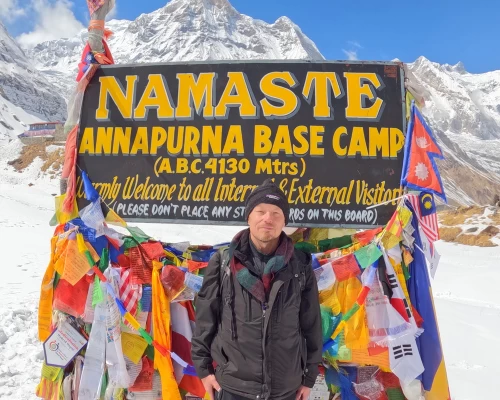
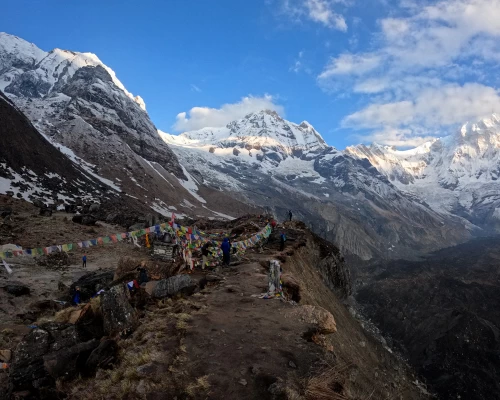
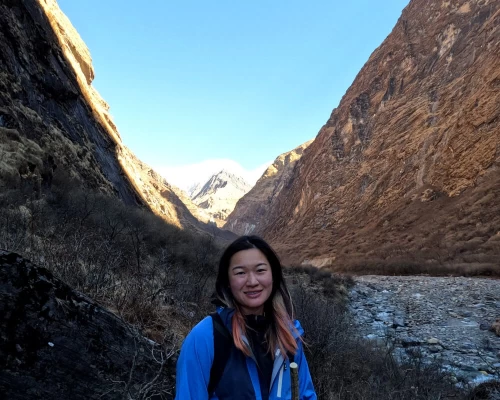
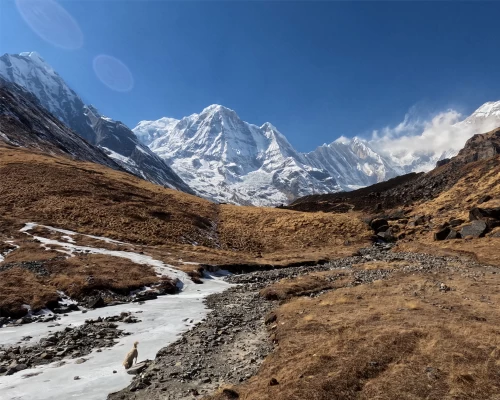
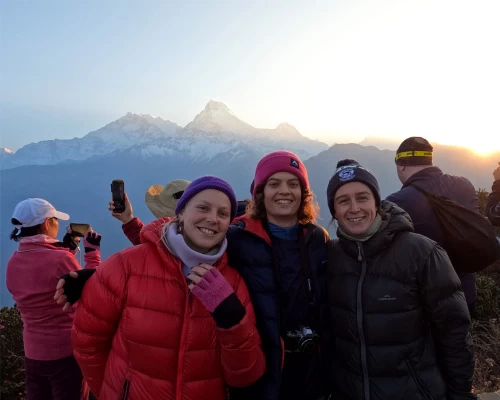
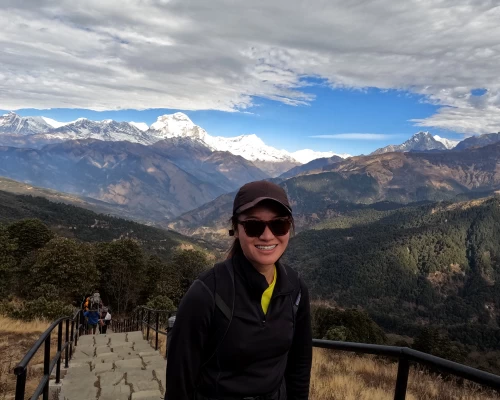



-(1).webp)

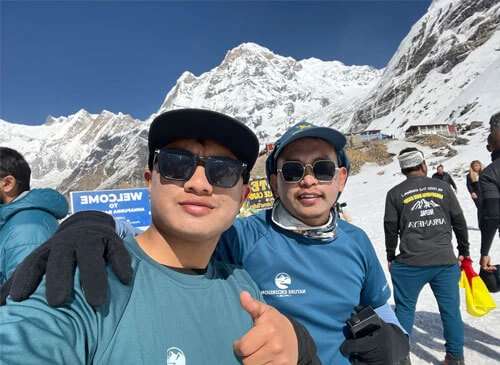
.webp)